#Kraft Suspense Theatre
Text

Peter Lorre and Katherine Crawford in Kraft Suspense Theatre, S1, E3, The End of the World, Baby. Aired Oct 24, 1963
#He could grip my arm like that#giving that look#peter lorre#Kraft Suspense Theatre#Katherine Crawford
6 notes
·
View notes
Text
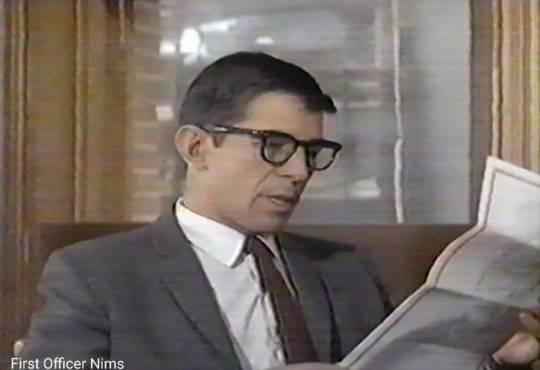








Leonard Nimoy in Kraft Suspense Theatre. He was in two episodes: "The World I Want" 1964, and "Kill No More" 1965. 😁🖖
#leonard nimoy#nimoy#spock#Kraft Suspense Theatre#Kill no more#the world i want#Kraft#first officer nims
26 notes
·
View notes
Text

Tried to do something in the style of Alex Katz: old Peter Lorre as featured in Kraft's Suspense Theatre - The End of the World, Baby (season 1, episode 3, 1963)
#face is wonky but i'm not going to work on it anymore#peter lorre#alex katz#study#style study#style exercise#digital drawing#ipad pro
12 notes
·
View notes
Photo

TV Guide - October 12 - 18, 1963
Biagio Anthony Gazzara (August 28, 1930 – February 3, 2012) Actor and director of film, stage, and television. He received numerous accolades, including a Primetime Emmy Award and a Drama Desk Award.
Gazzara became well known in several television series, beginning with Arrest and Trial, which ran from 1963 to 1964 on ABC.
He also appeared in the TV special A Carol for Another Christmas (1964). He also guest-starred on Kraft Suspense Theatre.
He gained fame in the TV series Run for Your Life which ran from 1965 to 1968 on NBC, in which he played a terminally ill man trying to get the most out of the last two years of his life. For his work in the series, Gazzara received two Emmy nominations for "Outstanding Lead Actor in a Drama Series" and three Golden Globe nominations for "Best Performance by an Actor in a Television Series – Drama. (Wikipedia)
Kevin Joseph Aloysius “Chuck” Connors (April 10, 1921 – November 10, 1992) Actor, writer and professional basketball and baseball player. He is one of only 12 athletes in the history of American professional sports to have played both Major League Baseball and in the National Basketball Association.With a 40-year film and television career, he is best known for his five-year role as Lucas McCain in the highly rated ABC series The Rifleman (1958–1963)
As Connors was strongly typecast for playing the single-father rancher, he then starred in several short-lived series, including: ABC's Arrest and Trial (1963–1964), an early forerunner of Law and Order featuring two young actors Ben Gazzara and Don Galloway; and NBC's post-Civil War-era series Branded (1965–1966).
In 1967–1968, Connors starred in the ABC series Cowboy in Africa alongside Tom Nardini and British actor Ronald Howard. (Wikipedia)
7 notes
·
View notes
Text

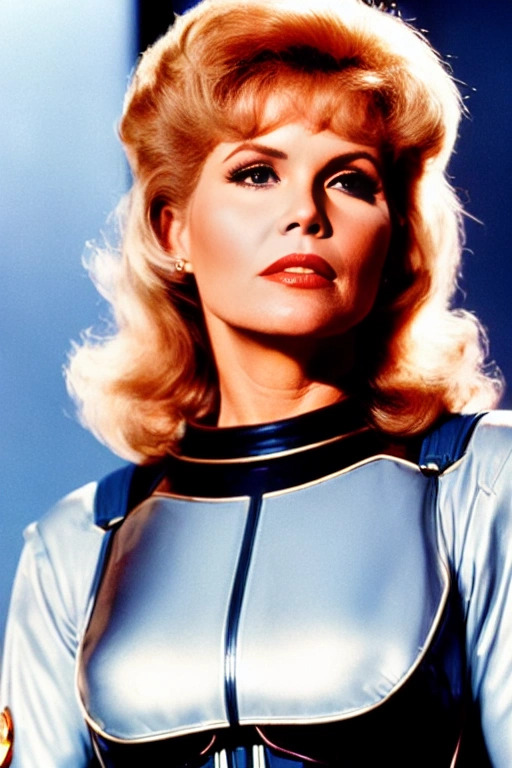
the first image is Vivian Larsen from an episode of Kraft Suspense Theatre, "Kiss Me/Kill Me" - if you flipped the channel that night, you would also see Vivian Larsen in the Spacetime Sally episode, "Farthest Away"
(fun fact, John Williams composed the theme music for Kraft Suspense Theatre)
#scifi#retro#space girl#fashion#classic television#classic tv#art#artwork#ai#ai art#ai artwork#retro aesthetic#vintage#ai photography
18 notes
·
View notes
Photo
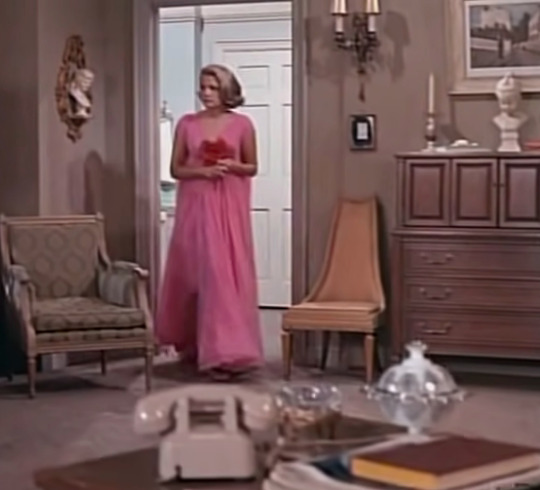

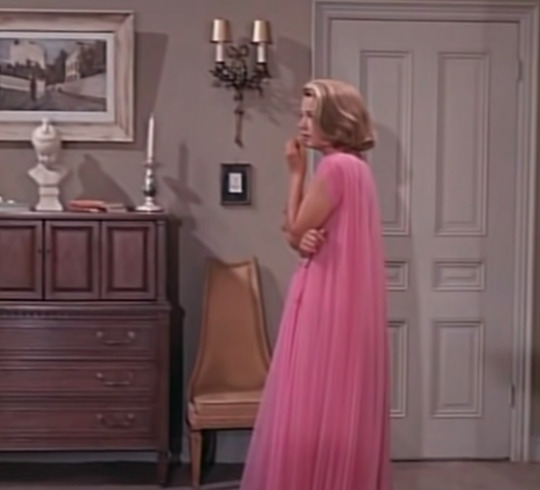



Gena Rowlands on KRAFT SUSPENSE THEATRE
19 notes
·
View notes
Text
Kraft Suspense Theatre (Full TV Series) 1963–1965

youtube
An American television anthology series that was produced and broadcast from 1963 to 1965 on NBC. Sponsored by Kraft Foods, it was seen three weeks out of every four and was pre-empted for Perry Como's Kraft Music Hall specials once monthly. Como's production company, Roncom Films, also produced Kraft Suspense Theatre. (The company name, "Roncom Films" stood for "RONnie COMo," Perry's son, who was in his early twenties when this series premiered). Writer, editor, critic and radio playwright Anthony Boucher served as consultant on the series.
Later syndicated under the title Crisis, it was one of the few suspense series then broadcast in color. While most of NBC's shows were in color then, all-color network line-ups did not become the norm until the 1966-67 season. It was also packaged with episodes of Bob Hope Presents the Chrysler Theatre under the title Universal Star Time.
In Britain BBC2 screened episodes of this series and Bob Hope Presents the Chrysler Theatre under the banner of Impact.
Ben Cooper, Richard Crenna, Clint Walker, John Forsythe, Ron Foster, Vivi Janiss, Brad Johnson, Jack Kelly, Robert Loggia, Ida Lupino, Martin Milner, Leslie Nielsen, Larry Pennell, Mickey Rooney, James Whitmore, Jeffrey Hunter, Tippi Hedren, Telly Savalas, Robert Ryan and Michael Winkelman were among the actors and actresses cast on Kraft Suspense Theatre.
Directors included prominent names in television and later features, examples being Robert Altman, Richard L. Bare, Roy Huggins, Buzz Kulik, David Lowell Rich, Ida Lupino, Sydney Pollack, Elliot Silverstein, Jack Smight, Ralph Senensky, and Paul Wendkos.
Some episodes doubled as pilots for potential series. The episode "Rapture At Two-Forty," in particular, was the pilot for the series Run for Your Life, which premiered on NBC in the fall of 1965 and ran till 1968.
The 1968 theatrical film Sergeant Ryker, starring Lee Marvin, was a two-part made-for-television film that was first broadcast on Kraft Suspense Theatre under the title "The Case Against Paul Ryker". It also served as a pilot for the 1966 series Court Martial, which ABC would broadcast. Other episodes that were later expanded into theatrical films (initially for European release) included "Once Upon a Savage Night", released as Nightmare in Chicago, and "In Darkness, Waiting", which was released as Strategy of Terror.
Some of the episodes missing from youtube can be found here in the internet archive -
https://archive.org/search.php?query=subject%3A%22Kraft+Suspense+Theatre%22&and%5B%5D=mediatype%3A%22movies%22&sort=titleSorter
#kraft suspense theatre#full tv series#1963–1965#kraft foods#perry como#anthony boucher#crisis#chrysler theatre#Universal Star Time#bob hope#impact#ben cooper#Richard Crenna#john forsythe#leslie nielsen#mickey rooney#telly savalas#clint walker#sydney pollack#robert altman
1 note
·
View note
Photo


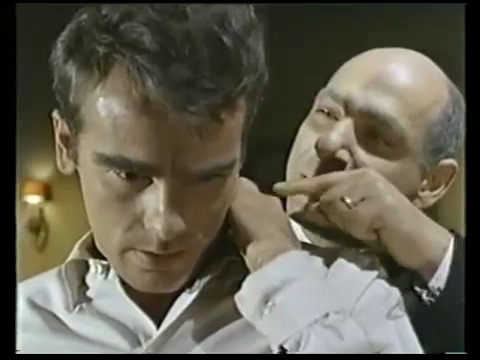
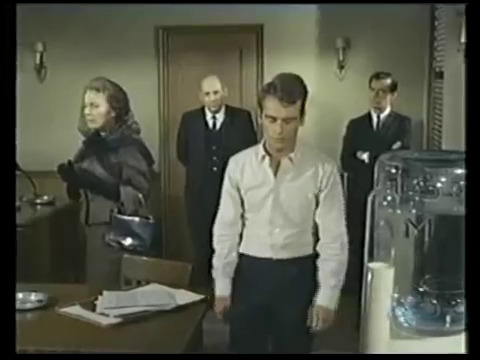
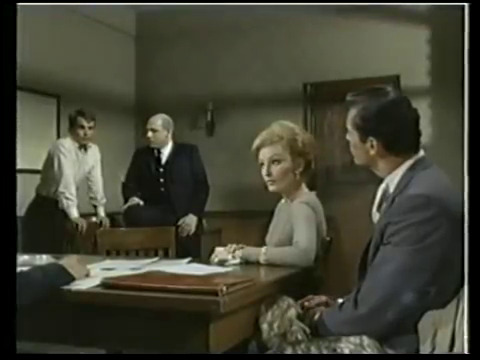
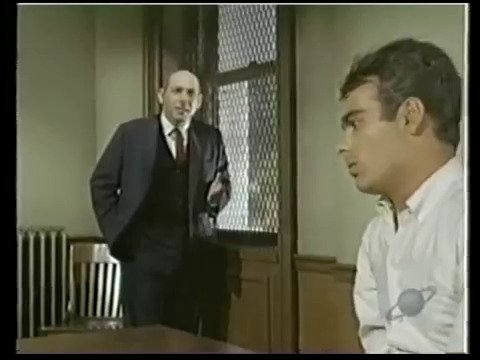

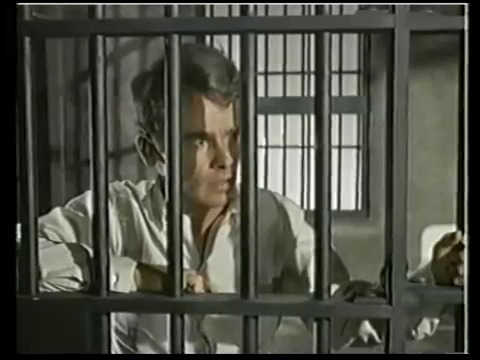


6 notes
·
View notes
Text
gena having a monologue i this. hell yes
20 notes
·
View notes
Photo

Subject: Ida Lupino, Director
Duration: 17 Days
Reference Materials: The Bigamist, General Electric Theater: “The Iron Silence,“ Hard, Fast and Beautiful, The Hitch-Hiker, Kraft Suspense Theatre: “The Threatening Eye,” Never Fear, Not Wanted, Outrage, Screen Directors Playhouse: "No. 5 Checked Out," Thriller: "Guillotine," "La Strega," "Mr. George," "The Bride Who Died Twice," "The Closed Cabinet," "The Lethal Ladies," "Trio of Terror," and "What Beckoning Ghost"
Life Quote: "One of us may have to go. But I guarantee you, it won't be me!"
Extra Credits: The Trouble With Angels
#the bigamist#general electric theater#the iron silence#hard fast and beautiful#the hitch-hiker#kraft suspense theatre#the threatening eye#never fear#not wanted#outrage#screen directors playhouse#no. 5 checked out#thriller#guillotine#la strega#mr. george#the bride who died twice#the closed cabinet#the lethal ladies#trio of terror#what beckoning ghost#the trouble with angels
0 notes
Text

John Chester Brooks Morris (February 16, 1901 – September 11, 1970) was an American stage, film, television, and radio actor. He had some prestigious film roles early in his career, and was nominated for an Academy Award. Chester Morris is best remembered today for portraying Boston Blackie, a criminal-turned-detective, in the modestly budgeted Boston Blackie film series of the 1940s.
Chester Morris was born John Chester Brooks Morris in New York City, and was one of five children of Broadway stage actor William Morris and stage comedian Etta Hawkins. His siblings who lived to adulthood were screenwriter-actor Gordon Morris, actor Adrian Morris, and actress Wilhelmina Morris. Another brother, Lloyd Morris, had died young.
Morris dropped out of school and began his Broadway career at 15 years old opposite Lionel Barrymore in The Copperhead. He made his film debut in the silent comedy-drama film An Amateur Orphan (1917).
After appearing in several more Broadway productions in the early 1920s, Morris joined his parents, sister, and two brothers, Gordon and Adrian, on the vaudeville circuit. From 1923, they performed William Morris' original sketch called All the Horrors of Home, which premiered at the Palace Theatre, New York, then on the Keith-Orpheum circuit for two years, including Proctor's Theatre, Mount Vernon, New York, and culminating in Los Angeles in 1925. Morris returned to Broadway with roles in The Home Towners (1926) and Yellow (1927). While appearing in the 1927 play Crime, he was spotted by a talent agent and was signed to a film contract.
Morris made his sound film debut in the 1929 film Alibi, for which he was nominated for an Academy Award for Best Actor. He followed with roles in Woman Trap (1929), The Case of Sergeant Grischa (1930) and The Divorcee, starring Norma Shearer in 1930. Later that year, Morris was cast as one of the leads (with Wallace Beery and Robert Montgomery) in the MGM prison drama The Big House. For the next two years, he worked steadily in films for United Artists and MGM and was cast opposite Jean Harlow in the 1932 comedy-drama Red-Headed Woman.
By the mid- to late 1930s, Morris' popularity had begun to wane and he was cast as the lead actor such B-movies as Smashing the Rackets (1938) and Five Came Back (1939). In 1941, Morris' career was revived when he was cast as criminal-turned-detective Boston Blackie. Morris appeared in a total of 14 Boston Blackie films for Columbia Pictures, beginning with Meet Boston Blackie. He reprised the role of Boston Blackie for the radio series in 1944. During World War II, Morris performed magic tricks in over 350 USO shows. He had been practicing magic since the age of 12 and was considered a top amateur magician.
While appearing in the Boston Blackie series, Morris continued to appear in roles in other films mostly for Pine-Thomas films for Paramount Pictures. After appearing in 1949's Boston Blackie's Chinese Venture, the final Boston Blackie film, Morris largely retired from films. During the 1950s, he focused mainly on television and theatre, returning to Broadway in 1954 in the comedy The Fifth Season. During this time, Morris also appeared in guest spots for the anthology series Cameo Theatre, Lights Out, Tales of Tomorrow, Alcoa Premiere, Suspense, Danger, Robert Montgomery Presents, The Web, Phillip Morris Playhouse, Studio One, and Kraft Television Theatre. He briefly returned to films in 1955 with a role in the prison drama Unchained, followed by a role in the 1956 science-fiction horror film The She-Creature. In 1960, he had recurring role as Detective Lieutenant Max Ritter in the CBS summer replacement series, Diagnosis: Unknown. The series lasted a year, after which Morris appeared in the NBC television film A String of Beads. In November 1960, he returned to Broadway as Senator Bob Munson in the stage adaptation of the 1959 novel Advise and Consent. Morris remained with the production until it closed in May 1961. In October, he reprised his role for the touring production.
In the early to mid-1960s, Morris appeared in guest spots for the dramas Route 66, The Defenders, and Dr. Kildare. In 1965, he replaced Jack Albertson in the Broadway production of The Subject Was Roses. He reprised his role in the play for the touring production in 1966.
In mid-1968, Morris starred opposite Barbara Britton in the touring production of Where Did We Go Wrong?. After the production wrapped, he returned to his home in Manhattan, where his health began to decline. Morris was later diagnosed with stomach cancer. Despite his declining health, Morris began work on what was his last film role, as Pop Weaver in the biographical drama The Great White Hope (1970). The film was released after his death. After filming wrapped, Morris joined the stage production of The Caine Mutiny Court Martial at the Bucks County Playhouse in New Hope, Pennsylvania.
On September 11, 1970, Lee R. Yopp, the producer and director of Caine, was scheduled to have lunch with Morris. After Yopp could not reach Morris by phone at his motel room, he went to Morris' room, where he found the actor's body lying on the floor. The county coroner attributed Morris' death to an overdose of barbiturates. His remains were cremated and scattered over a German river.
Morris was married twice. He first married Suzanne Kilbourne on November 8, 1926. They had two children, John Brooks and Cynthia. Kilbourne was granted an interlocutory divorce in November 1939 which was finalized on November 26, 1940.
On November 30, 1940, Morris married socialite Lillian Kenton Barker at the home of actor Frank Morgan. They had a son, Kenton, born in 1944. The couple remained married until Morris' death in 1970.
#chester morris#classic hollywood#classic movie stars#golden age of hollywood#old hollywood#1920s hollywood#1930s hollywood#1940s hollywood#1950s hollywood#1970s hollywood
9 notes
·
View notes
Photo
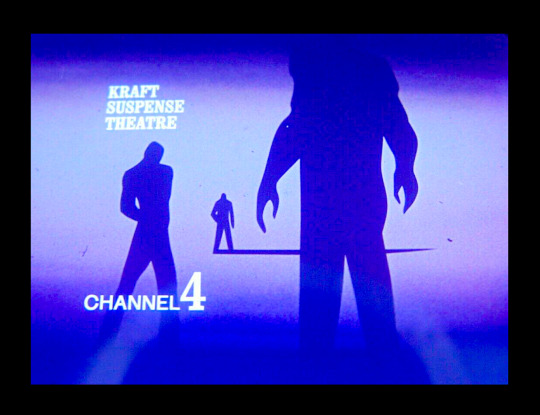
Kraft Suspense Theatre on Channel 4
21 notes
·
View notes
Photo

TV Guide - September 14 - 20, 1963
Fall Freview 1963 - 1964 Shows
ABC
100 Grand (September 15 – September 29, 1963)
Arrest and Trial (September 15, 1963 – September 6, 1964)
Breaking Point (September 16, 1963 – April 27, 1964)
Burke's Law (September 20, 1963 – January 12, 1966)
Channing (September 18, 1963 – April 8, 1964)
Destry (February 14 – May 8, 1964)
The Edie Adams Show (September 26, 1963 – March 19, 1964)
The Farmer's Daughter (September 20, 1963 – April 22, 1966)
The Fight of the Week (October 8, 1960 – September 11, 1964)
The Fugitive (September 17, 1963 – August 29, 1967)
The Greatest Show on Earth (September 17, 1963 – April 28, 1964)
The Hollywood Palace (January 4, 1964 – February 7, 1970)
The Jerry Lewis Show (September 21, 1963 – December 21, 1963)
The Jimmy Dean Show ( September 19, 1963 – April 1, 1966)
Laughs For Sale (October 20, 1963 - December 1963)
The Outer Limits (September 16, 1963 – January 16, 1965)
The Patty Duke Show ( September 18, 1963 – April 27, 1966)
Saga of Western Man (October 16, 1963 - May 8, 1969)
The Sid Caesar Show (October 3, 1963 - March 26, 1964)
The Travels of Jaimie McPheeters (September 29, 1963 – March 15, 1964)
General Hospital (April 1, 1963 – Present)
CBS
Chronicle (October 2, 1963 - February 12, 1964)
The Danny Kaye Show (September 25, 1963 – June 28, 1967)
East Side/West Side (September 23, 1963 – April 27, 1964)
Glynis (September 25 – December 18, 1963)
The Great Adventure (September 27, 1963 – May 1, 1964)
The Judy Garland Show (September 29, 1963 – March 29, 1964)
Made in America (April 5, 1964 -
My Favorite Martian (September 29, 1963 – May 1, 1966)
The New Phil Silvers Show (September 28, 1963 – April 25, 1964)
Petticoat Junction (September 24, 1963 – April 4, 1970)
Slattery's People (September 21, 1964 – November 26, 1965)
Summer Playhouse (1964 - 1967)
Tell It to the Camera (January 11, 1962 - May 31, 1962) ?
NBC
Bob Hope Presents the Chrysler Theatre (October 4, 1963 – May 17, 1967)
Chrysler Presents a Bob Hope Special *
Espionage (October 2, 1963 - May 20, 1964)
Grindl ( September 15, 1963 – May 3, 1964)
Harry's Girls (September 13, 1963 – January 3, 1964)
Hollywood and the Stars (September 30, 1963 - May 18, 1964)
Kraft Suspense Theatre (October 10, 1963 – July 1, 1965)
Let's Make a Deal (December 30, 1963 -
Mr. Novak (September 24, 1963 – April 27, 1965)
NBC Monday Night at the Movies (February 4, 1963 - April 13, 1964)
On Parade (Summer 1964)
The Richard Boone Show (September 24, 1963 – March 31, 1964)
Temple Houston (September 19, 1963 – April 2, 1964)
That Was the Week That Was (November 10, 1963 to May 4, 1965)
You Don't Say! (1963 - 1979)
The Lieutenant (September 14, 1963 – April 18, 1964)
The Doctors (April 1, 1963 – December 31, 1982)
1963-1964 TV Schedule
8 notes
·
View notes
Video
From Kraft Suspense Theatre, s1ep09: “The Hunt”
13 notes
·
View notes
Text
Lena Horne
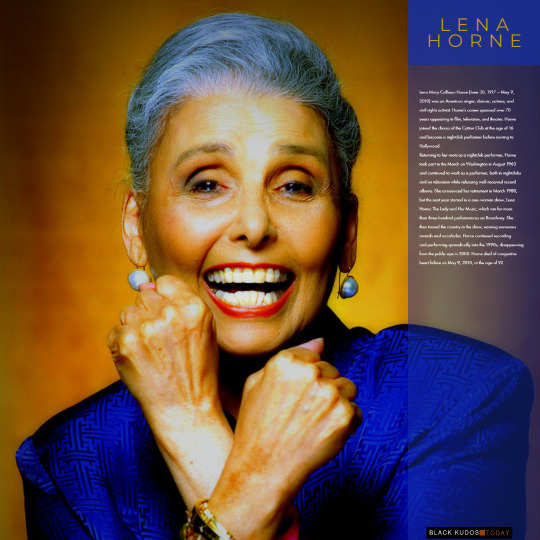
Lena Mary Calhoun Horne (June 30, 1917 – May 9, 2010) was an American singer, dancer, actress, and civil rights activist. Horne's career spanned over 70 years, appearing in film, television, and theater. Horne joined the chorus of the Cotton Club at the age of 16 and became a nightclub performer before moving to Hollywood.
Returning to her roots as a nightclub performer, Horne took part in the March on Washington in August 1963 and continued to work as a performer, both in nightclubs and on television while releasing well-received record albums. She announced her retirement in March 1980, but the next year starred in a one-woman show, Lena Horne: The Lady and Her Music, which ran for more than 300 performances on Broadway. She then toured the country in the show, earning numerous awards and accolades. Horne continued recording and performing sporadically into the 1990s, disappearing from the public eye in 2000. Horne died of congestive heart failure on May 9, 2010, at the age of 92.
Early life
Lena Horne was born in Bedford–Stuyvesant, Brooklyn. She was reportedly descended from the John C. Calhoun family, and both sides of her family were through a mixture of African, Native American, and European descent and belonged to the upper stratum of middle-class, well-educated people. Her father, Edwin Fletcher "Teddy" Horne Jr. (1893–1970), a numbers kingpin in the gambling trade, left the family when she was three and moved to an upper-middle-class African American community in the Hill District community of Pittsburgh, Pennsylvania. Her mother, Edna Louise Scottron (1894–1976), was a granddaughter of inventor Samuel R. Scottron; she was an actress with a black theatre troupe and traveled extensively. Edna's maternal grandmother, Amelie Louise Ashton, was a Senegalese slave. Horne was raised mainly by her grandparents, Cora Calhoun and Edwin Horne.
When Horne was five, she was sent to live in Georgia. For several years, she traveled with her mother. From 1927 to 1929, she lived with her uncle, Frank S. Horne, dean of students at Fort Valley Junior Industrial Institute (now part of Fort Valley State University) in Fort Valley, Georgia, who later served as an adviser to President Franklin Delano Roosevelt. From Fort Valley, southwest of Macon, Horne briefly moved to Atlanta with her mother; they returned to New York when Horne was 12 years old. She then attended Girls High School, an all-girls public high school in Brooklyn that has since become Boys and Girls High School; she dropped out without earning a diploma. Aged 18, she moved to her father's home in Pittsburgh, staying in the city's Little Harlem for almost five years and learning from native Pittsburghers Billy Strayhorn and Billy Eckstine, among others.
Career
Road to Hollywood
In the fall of 1933, Horne joined the chorus line of the Cotton Club in New York City. In the spring of 1934, she had a featured role in the Cotton Club Parade starring Adelaide Hall, who took Lena under her wing. Horne made her first screen appearance as a dancer in the musical short Cab Calloway's Jitterbug Party (1935). A few years later, Horne joined Noble Sissle's Orchestra, with which she toured and with whom she made her first records, issued by Decca. After she separated from her first husband, Horne toured with bandleader Charlie Barnet in 1940–41, but disliked the travel and left the band to work at the Cafe Society in New York. She replaced Dinah Shore as the featured vocalist on NBC's popular jazz series The Chamber Music Society of Lower Basin Street. The show's resident maestros, Henry Levine and Paul Laval, recorded with Horne in June 1941 for RCA Victor. Horne left the show after only six months when she was hired by former Cafe Trocadero (Los Angeles) manager Felix Young to perform in a Cotton Club-style revue on the Sunset Strip in Hollywood.
Horne already had two low-budget movies to her credit: a 1938 musical feature called The Duke is Tops (later reissued with Horne's name above the title as The Bronze Venus); and a 1941 two-reel short subject, Boogie Woogie Dream, featuring pianists Pete Johnson and Albert Ammons. Horne's songs from Boogie Woogie Dream were later released individually as soundies. Horne made her Hollywood nightclub debut at Felix Young's Little Troc on the Sunset Strip in January 1942. A few weeks later, she was signed by Metro-Goldwyn-Mayer. In November 1944, she was featured in an episode of the popular radio series Suspense, as a fictional nightclub singer, with a large speaking role along with her singing. In 1945 and 1946, she sang with Billy Eckstine's Orchestra.
She made her debut at Metro-Goldwyn-Mayer in Panama Hattie (1942) and performed the title song of Stormy Weather based loosely on the life of Adelaide Hall, (1943), at 20th Century Fox, while on loan from MGM. She appeared in a number of MGM musicals, most notably Cabin in the Sky (1943), but was never featured in a leading role because of her race and the fact that her films had to be re-edited for showing in cities where theaters would not show films with black performers. As a result, most of Horne's film appearances were stand-alone sequences that had no bearing on the rest of the film, so editing caused no disruption to the storyline. A notable exception was the all-black musical Cabin in the Sky, although one number from that film was cut before release because it was considered too suggestive by the censors: Horne singing "Ain't It the Truth" while taking a bubble bath. This scene and song are featured in the film That's Entertainment! III (1994) which also featured commentary from Horne on why the scene was deleted prior to the film's release. Lena Horne was the first African-American elected to serve on the Screen Actors Guild board of directors.
In Ziegfeld Follies (1946), she performed "Love" by Hugh Martin and Ralph Blane. Horne lobbied for the role of Julie LaVerne in MGM's 1951 version of Show Boat (having already played the role when a segment of Show Boat was performed in Till the Clouds Roll By, 1946) but lost the part to Ava Gardner, a personal friend in real life. Horne claimed this was due to the Production Code's ban on interracial relationships in films, but MGM sources state she was never considered for the role in the first place. In the documentary That's Entertainment! III, Horne stated that MGM executives required Gardner to practice her singing using Horne's recordings, which offended both actresses. Ultimately, Gardner's voice was overdubbed by actress Annette Warren (Smith) for the theatrical release.
Changes of direction
By the mid-1950s, Horne was disenchanted with Hollywood and increasingly focused on her nightclub career. She made only two major appearances for MGM during the 1950s: Duchess of Idaho (which was also Eleanor Powell's final film); and the 1956 musical Meet Me in Las Vegas. She was blacklisted during the 1950s for her affiliations in the 1940s with communist-backed groups. She would subsequently disavow communism. She returned to the screen three more times, playing chanteuse Claire Quintana in the 1969 film Death of a Gunfighter, Glinda in The Wiz (1978), which was directed by her then son-in-law Sidney Lumet, and co-hosting the MGM retrospective That's Entertainment! III (1994), in which she was candid about her unkind treatment by the studio.
After leaving Hollywood, Horne established herself as one of the premier nightclub performers of the post-war era. She headlined at clubs and hotels throughout the U.S., Canada, and Europe, including the Sands Hotel in Las Vegas, the Cocoanut Grove in Los Angeles, and the Waldorf-Astoria in New York. In 1957, a live album entitled, Lena Horne at the Waldorf-Astoria, became the biggest-selling record by a female artist in the history of the RCA Victor label at that time. In 1958, Horne became the first African-American woman to be nominated for a Tony Award for "Best Actress in a Musical" (for her part in the "Calypso" musical Jamaica) which, at Lena's request featured her longtime friend Adelaide Hall.
From the late 1950s through to the 1960s, Horne was a staple of TV variety shows, appearing multiple times on Perry Como's Kraft Music Hall, The Ed Sullivan Show, The Dean Martin Show, and The Bell Telephone Hour. Other programs she appeared on included The Judy Garland Show, The Hollywood Palace, and The Andy Williams Show. Besides two television specials for the BBC (later syndicated in the U.S.), Horne starred in her own U.S. television special in 1969, Monsanto Night Presents Lena Horne. During this decade, the artist Pete Hawley painted her portrait for RCA Victor, capturing the mood of her performance style.
In 1970, she co-starred with Harry Belafonte in the hour-long Harry & Lena special for ABC; in 1973, she co-starred with Tony Bennett in Tony and Lena. Horne and Bennett subsequently toured the U.S. and U.K. in a show together. In the 1976 program America Salutes Richard Rodgers, she sang a lengthy medley of Rodgers songs with Peggy Lee and Vic Damone. Horne also made several appearances on The Flip Wilson Show. Additionally, Horne played herself on television programs such as The Muppet Show, Sesame Street, and Sanford and Son in the 1970s, as well as a 1985 performance on The Cosby Show and a 1993 appearance on A Different World. In the summer of 1980, Horne, 63 years old and intent on retiring from show business, embarked on a two-month series of benefit concerts sponsored by the sorority Delta Sigma Theta. These concerts were represented as Horne's farewell tour, yet her retirement lasted less than a year.
On April 13, 1980, Horne, Luciano Pavarotti, and host Gene Kelly were all scheduled to appear at a Gala performance at the Metropolitan Opera House to salute the NY City Center's Joffrey Ballet Company. However, Pavarotti's plane was diverted over the Atlantic and he was unable to appear. James Nederlander was an invited Honored Guest and noted that only three people at the sold-out Metropolitan Opera House asked for their money back. He asked to be introduced to Lena following her performance. In May 1981, The Nederlander Organization, Michael Frazier, and Fred Walker went on to book Horne for a four-week engagement at the newly named Nederlander Theatre on West 41st Street in New York City. The show was an instant success and was extended to a full year run, garnering Horne a special Tony award, and two Grammy Awards for the cast recording of her show Lena Horne: The Lady and Her Music. The 333-performance Broadway run closed on Horne's 65th birthday, June 30, 1982. Later that same week, she performed the entire show again to record it for television broadcast and home video release. Horne began a tour a few days later at Tanglewood (Massachusetts) during the weekend of July 4, 1982. The Lady and Her Music toured 41 cities in the U.S. and Canada until June 17, 1984. It played in London for a month in August and ended its run in Stockholm, Sweden, September 14, 1984. In 1981, she received a Special Tony Award for the show, which also played to acclaim at the Adelphi Theatre in London in 1984. Despite the show's considerable success (Horne still holds the record for the longest-running solo performance in Broadway history), she did not capitalize on the renewed interest in her career by undertaking many new musical projects. A proposed 1983 joint recording project between Horne and Frank Sinatra (to be produced by Quincy Jones) was ultimately abandoned, and her sole studio recording of the decade was 1988's The Men in My Life, featuring duets with Sammy Davis Jr. and Joe Williams. In 1989, she received the Grammy Lifetime Achievement Award.
In 1995, a "live" album capturing Horne's Supper Club performance was released (subsequently winning a Grammy Award for Best Jazz Vocal Album). In 1998, Horne released another studio album, entitled Being Myself. Thereafter, Horne retired from performing and largely retreated from public view, though she did return to the recording studio in 2000 to contribute vocal tracks on Simon Rattle's Classic Ellington album.
Civil rights activism
Horne was long involved with the Civil Rights Movement. In 1941, she sang at Cafe Society and worked with Paul Robeson. During World War II, when entertaining the troops for the USO, she refused to perform "for segregated audiences or for groups in which German POWs were seated in front of black servicemen", according to her Kennedy Center biography. Because the U.S. Army refused to allow integrated audiences, she staged her show for a mixed audience of black U.S. soldiers and white German POWs. Seeing the black soldiers had been forced to sit in the back seats, she walked off the stage to the first row where the black troops were seated and performed with the Germans behind her. After quitting the USO in 1945 because of the organization's policy of segregating audiences, Horne financed tours of military camps herself.
She was at an NAACP rally with Medgar Evers in Jackson, Mississippi, the weekend before Evers was assassinated. She also met President John F. Kennedy at the White House two days before he was assassinated. She was at the March on Washington and spoke and performed on behalf of the NAACP, SNCC, and the National Council of Negro Women. She also worked with Eleanor Roosevelt to pass anti-lynching laws. Tom Lehrer mentions her in his song "National Brotherhood Week" in the line "Lena Horne and Sheriff Clark are dancing cheek to cheek" referring (wryly) to her and to Sheriff Jim Clark, of Selma, Alabama, who was responsible for a violent attack on civil rights marchers in 1965. In 1983, the NAACP awarded her the Spingarn Medal.
Horne was a registered Democrat and on November 20, 1963, she, along with Democratic National Committee (DNC) Chairman John Bailey, Carol Lawrence, Richard Adler, Sidney Salomon, Vice-Chairwoman of the DNC Margaret B. Price, and Secretary of the DNC Dorothy Vredenburgh Bush, visited John F. Kennedy at The White House, two days prior to his assassination.
Personal life
Horne married Louis Jordan Jones, a political operative, in January 1937 in Pittsburgh. On December 21, 1937, their daughter, Gail (later known as Gail Lumet Buckley, a writer) was born. They had a son, Edwin Jones (February 7, 1940 – September 12, 1970) who died of kidney disease. Horne and Jones separated in 1940 and divorced in 1944. Horne's second marriage was to Lennie Hayton, who was music director and one of the premier musical conductors and arrangers at MGM, in December 1947 in Paris. They separated in the early 1960s, but never divorced; he died in 1971. In her as-told-to autobiography Lena by Richard Schickel, Horne recounts the enormous pressures she and her husband faced as an interracial couple. She later admitted in an interview in Ebony (May 1980) that she had married Hayton to advance her career and cross the "color-line" in show business.
Horne had affairs with Artie Shaw, Orson Welles, Vincente Minnelli, and the boxer Joe Louis.
Horne also had a long and close relationship with Billy Strayhorn, whom she said she would have married if he had been heterosexual. He was also an important professional mentor to her. Screenwriter Jenny Lumet, known for her award-winning screenplay Rachel Getting Married, is Horne's granddaughter, the daughter of filmmaker Sidney Lumet and Horne's daughter Gail. Her other grandchildren include Gail's other daughter, Amy Lumet, and her son's four children, Thomas, William, Samadhi, and Lena. Her great-grandchildren include Jake Cannavale.
From 1946 to 1962, Horne resided in a St. Albans, Queens, New York, enclave of prosperous African Americans, where she counted among her neighbors Count Basie, Ella Fitzgerald, and other jazz luminaries.
Death
Horne died of congestive heart failure on May 9, 2010. Her funeral took place at St. Ignatius Loyola Church on Park Avenue in New York. Thousands gathered and attendees included Leontyne Price, Dionne Warwick, Liza Minnelli, Jessye Norman, Chita Rivera, Cicely Tyson, Diahann Carroll, Leslie Uggams, Lauren Bacall, Robert Osborne, Audra McDonald, and Vanessa Williams. Her remains were cremated.
Legacy
In 2003, ABC announced that Janet Jackson would star as Horne in a television biographical film. In the weeks following Jackson's "wardrobe malfunction" debacle during the 2004 Super Bowl, however, Variety reported that Horne had demanded Jackson be dropped from the project. "ABC executives resisted Horne's demand", according to the Associated Press report, "but Jackson representatives told the trade newspaper that she left willingly after Horne and her daughter, Gail Lumet Buckley, asked that she not take part." Oprah Winfrey stated to Alicia Keys during a 2005 interview on The Oprah Winfrey Show that she might possibly consider producing the biopic herself, casting Keys as Horne.
In January 2005, Blue Note Records, her label for more than a decade, announced that "the finishing touches have been put on a collection of rare and unreleased recordings by the legendary Horne made during her time on Blue Note." Remixed by her longtime producer Rodney Jones, the recordings featured Horne with a remarkably secure voice for a woman of her years, and include versions of such signature songs as "Something to Live For", "Chelsea Bridge", and "Stormy Weather". The album, originally titled Soul but renamed Seasons of a Life, was released on January 24, 2006. In 2007, Horne was portrayed by Leslie Uggams as the older Lena and Nikki Crawford as the younger Lena in the stage musical Stormy Weather staged at the Pasadena Playhouse in California (January to March 2009). In 2011, Horne was also portrayed by actress Ryan Jillian in a one-woman show titled Notes from A Horne staged at the Susan Batson studio in New York City, from November 2011 to February 2012. The 83rd Academy Awards presented a tribute to Horne by actress Halle Berry at the ceremony held February 27, 2011.
In 2018, a forever stamp depicting Horne began to be issued; this made Horne the 41st honoree in the Black Heritage stamp series.
2 notes
·
View notes
